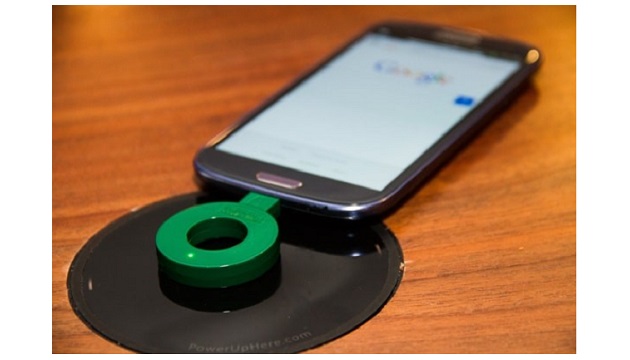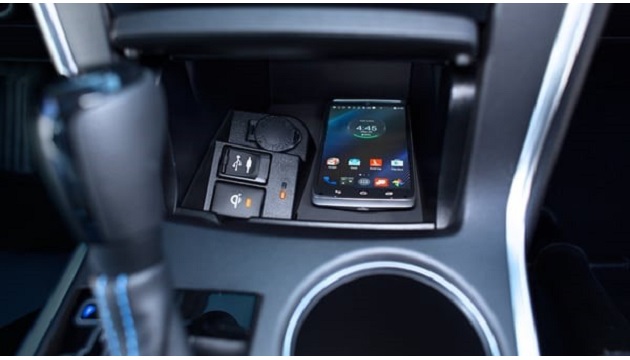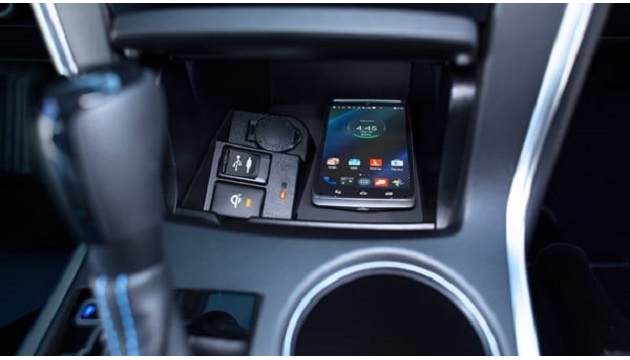Charging the batteries of smartphones, tablets, and other battery-operated products is a bit of pain especially if you’re “heavy user”. And how many times do you succeed the first time in correctly plugging in that micro-USB connector on our Android phone? So you would think wireless (inductive) charging would have taken off like a rocket, but it hasn’t for the usual reason: a battle between incompatible standards, with the typical consumer confusion as a result. If you haven’t delved into this area, here’s where wireless charging currently stands.
First, a short description of how inductive charging works. It’s actually been used to recharging electric toothbrushes, razors, and some other products for decades. As it applies to smartphones, there’s a charging base that plugs into a 120-VAC output. Coils inside produce an electromagnetic field when a voltage is applied to them, which is emitted over a very short distance and captured by coils in the device placed on it. The energy is converted back to current and transferred to the charging circuit, which charges the battery.

Figure 1: Powermat is available for non-wireless-charging equipped older phones by using a $10 ring that fits into the phone’s USB or iPhone port. Selected Starbucks in California, New York, and Boston have powermat charging stations.
There are three wireless charging standards in play:
- Qi (pronounced “chee” from the Chinese for “life force”) is championed by the Wireless Power Consortium (WPC) and operates between 100 to 205 kHz. Qi is integrated in more than 800 products, including many Android smartphones and some cameras, and there are many Qi chargers and accessories available. Qi charging is available in an increasing number of locations, including at least one airline, although the WPC’s focus has primarily been getting Qi into consumer products. IKEA has begun offering Qi charging as an option to install in its furniture and offers Qi-enabled cases for smartphones that don’t have it.

Figure 2: Toyota introduced a Qi wireless charging pad to their Camry in 2015. This works with all Qi-enabled smartphones, or smartphone cases that act as Qi “adapters.”
- Powermat is championed by the Power Matters Alliance (PMA) and operates between 277 to 357 kHz. The PMA has focused on creating an “ecosystem” of locations where Powermat is available and adds functions besides charging. Starbucks is adding Powermat charging stations at its coffee shops, and Powermat charging is available in New York’s Madison Square Garden, a smattering of McDonald’s restaurants in the U.S. and Europe, and others are interested. An adapter ring is available for phones that do not have built-in PMA wireless charging capability. (See Figure 1.) The ring retails for about $10 and plugs into the micro USB port on a phone or into an iPhone charging port. There’s also a PMA app that lets users find charging locations.
- Rezence from the Alliance for Wireless Power (A4WP) is based on the principle of Near Field Magnetic Resonance (NFMR) and operates at 6.78 MHz. This allows it to increase the allowable distance between the charging base and the device.
The PMA and A4WP, which have similar philosophies, merged back in June 2015 to provide a more effective force with which to battle Qi. The new A4WP/PMA alliance aims to use Wi-Fi, Bluetooth Smart, and near-field communications (NFC) in the future to provide useful functions and engage different markets.
So What to Do?
There are far more Qi-enabled products than Powermat or Rezence products. Some Android smartphones have integrated Qi, its overall presence is greater, and an enormous number of different chargers and accessories are available. So if your smartphone has Qi, you’re done.
If you have an iPhone you can use either Qi or Powermat, since even the company’s recently-introduced smartphones have neither. Apple typically creates its own solutions, so it’s safe to assume that might be the case with wireless charging as well, but we’ll have to wait a year to find out, when iPhone 7 appears.
Both Qi and Powermat will work with any phone by covering it with a case that houses the coils, which plugs into the phone’s micro-USB or Lightning port, making for a less-than-elegant solution. To use Powermat you can either use the case or “The Ring”, which plugs into the aforementioned port with its ring end sitting over the charging base.
Article Courtesy – Mouser Electronics








